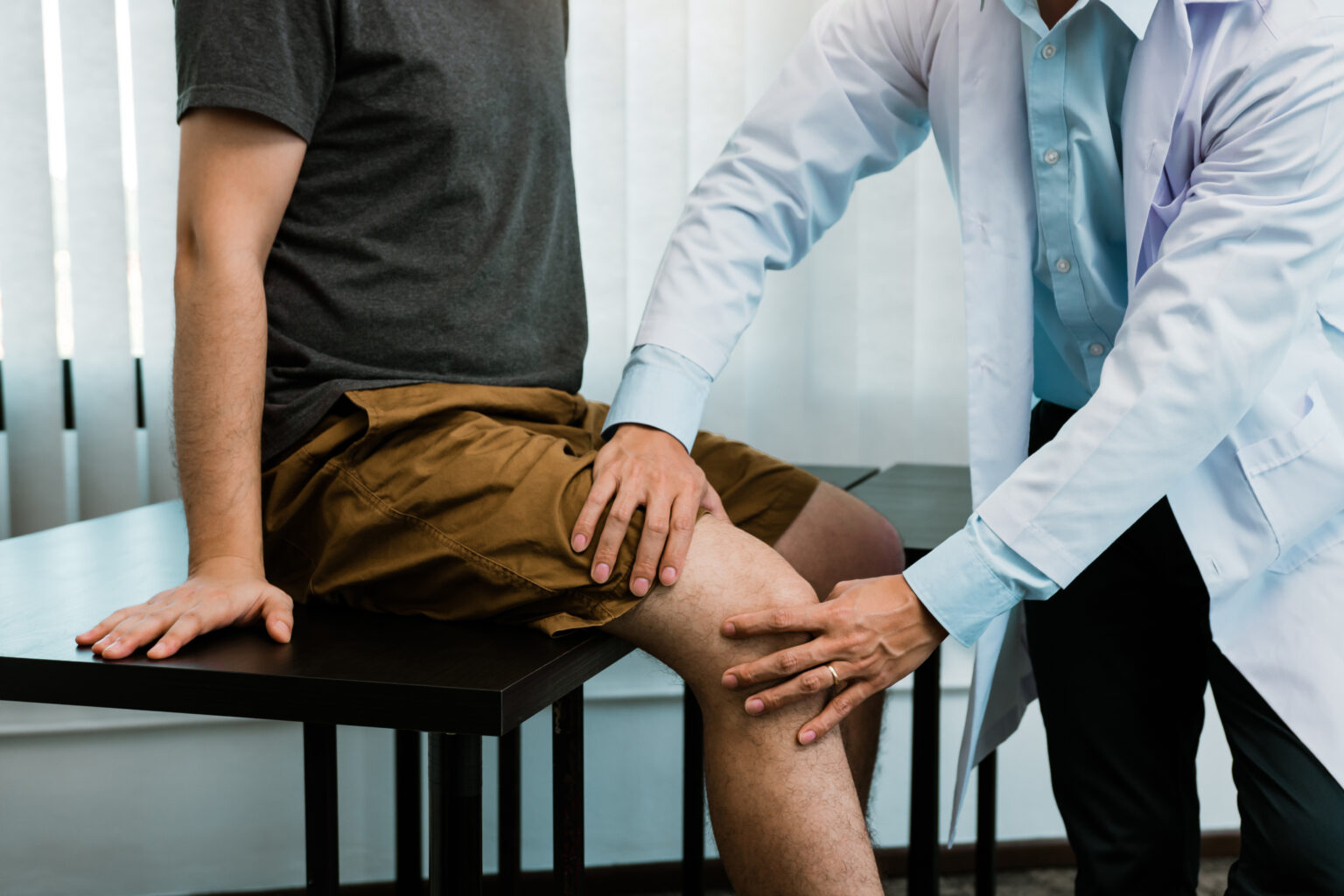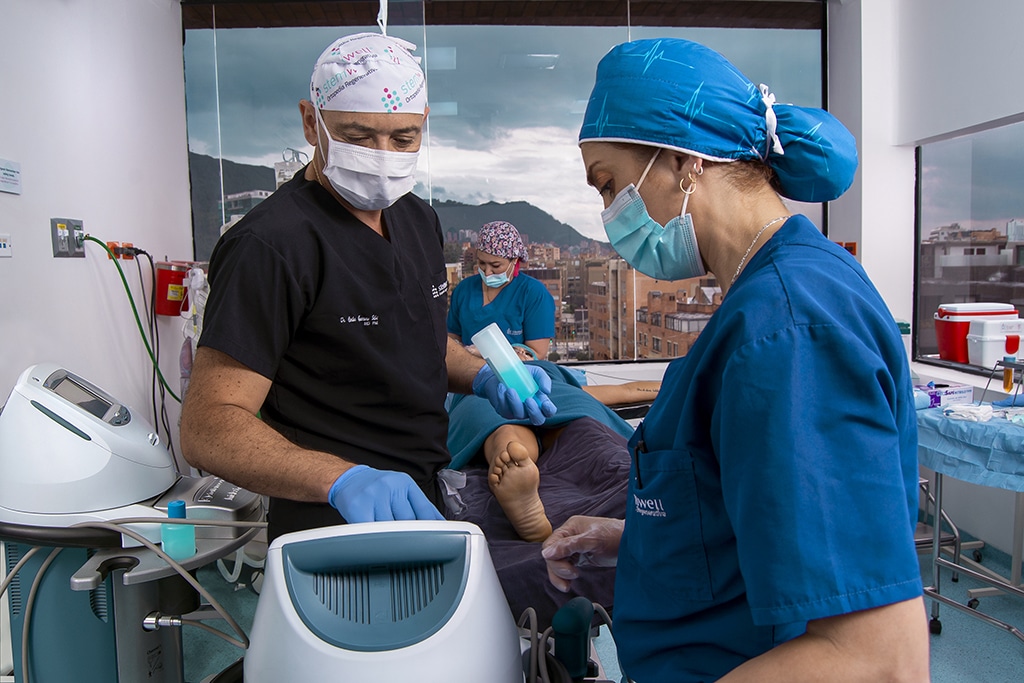Hamstring injuries are a common problem amongst athletes and physically active individuals. For some people, a few weeks out of action is enough to allow the muscle to heal back to full health. However, for others, a hamstring injury can lead to persistent issues, long-term pain, and prolonged downtime, causing a real impact on everyday life and overall wellbeing.
In such circumstances, could stem cell therapy offer a solution? As a frontier in regenerative medicine, stem cell therapy is supporting people to have faster recovery times and improved outcomes for a wide range of injuries and illnesses. But can it work for hamstring injuries in particular? This blog delves into the current evidence surrounding stem cell therapy for hamstring injuries and explores the questions most frequently asked by patients.

What is a Hamstring Injury?
The hamstring is a group of three muscles running along the back of each thigh. They play a crucial role in the movement of the hips, thighs, and knees, so are important for actions such as walking, running, and jumping.
The hamstrings can become injured through athletic activities or unusual movements during daily activities. Injuries can range from pulled muscles or mild strains (where the muscle fibers are overstretched but not torn) to a partial or complete tear.
These injuries are notoriously slow to heal and can be very painful. Prolonged inactivity is often required to allow the hamstring muscles to heal, which many people find frustrating. As there is a lack of therapeutic options available for this kind of injury, significant efforts are starting to be made using regenerative medicine1.
Understanding stem cell therapy

Stem cell therapy is a form of regenerative medicine that uses the natural power of stem cells to help repair damaged tissues and encourage the body’s own healing mechanisms.
Stem cells are unique in their ability to develop into many different types of specialized cells. Specialized cells play important roles in bodily functioning. For instance, red blood cells are a type of specialized cell which play a vital role in carrying oxygen around the body.
This property is what makes stem cells so special. Stem cells are a ‘blank slate’ that can divide and differentiate into a wide range of cells. So, when stem cells are introduced into a targeted region, they can develop into the specialized cells that the area needs. These specialized cells then divide exponentially, helping to ‘regenerate’ the tissues in the area and kickstart the body’s natural healing processes.
Stem cells also have immunomodulatory properties meaning they can reduce the immune response. Suppressing the immune system, while also preserving the body’s ability to fight diseases, helps to reduce inflammation throughout the body, alleviating the pain associated with certain injuries or illnesses.
Many clinical studies show that stem cell therapy can help the body heal itself and significantly improve the outcomes in a variety of diseases, injuries, and disorders.
Does stem cell therapy work for hamstring injuries?
Stem cell therapy involves healthy stem cells being injected directly into the targeted area, such as the hamstrings. In theory, these stem cells can differentiate into muscle cells, aiding the repair of damaged fibers and promoting the regeneration of healthy tissue. Stem cells can also reduce the inflammation associated with the injury.
If successful, stem cell treatments can potentially2:
- regenerate and repair damaged muscle tissues
- enhance the speed of recovery and improve the hamstring functionality
- reduce inflammation and overall pain.
Studies on the effectiveness of stem cell therapy for hamstring injuries are very limited. Some research explores the potential of stem cell therapy for muscle injuries, as well as tendon and ligament repairs3 4 5. However, further research is needed in this area and on the specific effectiveness of stem cell therapy for hamstring injuries.
Frequently asked questions
Stemwell uses highly concentrated and extensively analyzed umbilical cord stem cells to deliver stem cell treatments. These stem cells are ethically sourced from healthy donor umbilical cords. Once harvested, these stem cells can be administered in the following methods:
- Intravenously (IV): stem cells are injected into the bloodstream so they can circulate throughout the body. This helps to target and reduce inflammation throughout the body and helps to alleviate pain and swelling associated with a hamstring injury.
- Injection: a localized injection directed specifically into the areas of pain and inflammation around the hamstring.
Treatments which use mesenchymal stem cells (MSCs), the type of stem cells we use for therapy at Stemwell, are generally considered low risk. The chances of rejection are minimal and our highly skilled doctors also complete an extensive screening process to ensure the safety of the cells. However, as with any medical treatment, there are potential risks, and with each patient being unique, side effects cannot be ruled out. It’s also important to remember that although early research is promising, stem cell therapy is still a relatively new treatment. More research is needed to understand the long-term safety and effectiveness of the therapy. At Stemwell, our doctors are experienced and highly knowledgeable in stem cell treatments and take a range of precautions to minimize side effects. They will be able to answer questions around your treatment and identify any specific risks.
The timeframe for seeing improvements varies widely between individuals. Some people may notice changes within a few weeks, whereas others may require several months to observe significant healing. Continuous rehabilitation and follow-up assessments are crucial for monitoring progress.
The cost of stem cell therapy depends on a variety of factors. During an initial medical consultation, our team of skilled doctors will be able to identify your needs and outline a bespoke treatment plan. From this, we can give an indication of total costs.
Speak to Stemwell today to find out more

Stem cell therapy represents an exciting new treatment avenue for hamstring injuries, with the potential to promote quicker healing and improve your overall quality of life. Our expert team at Stemwell are dedicated to supporting you and finding the right treatment option to meet your needs.
If you would like to find out more about stem cell therapy you can contact us with any questions, or apply today to check your eligibility.
References
1 Torres-Torrillas, Marta; Rubio, Monica; Damia, Elena; Cuervo, Belen; del Romero, Ayla; Peláez, Pau; Chicharro, Deborah; Miguel, Laura; Sopena, Joaquin J. (2019). Adipose-Derived Mesenchymal Stem Cells: A Promising Tool in the Treatment of Musculoskeletal Diseases. International Journal of Molecular Sciences, 20(12), 3105–. doi:10.3390/ijms20123105
2 Torres-Torrillas, Marta; Rubio, Monica; Damia, Elena; Cuervo, Belen; del Romero, Ayla; Peláez, Pau; Chicharro, Deborah; Miguel, Laura; Sopena, Joaquin J. (2019). Adipose-Derived Mesenchymal Stem Cells: A Promising Tool in the Treatment of Musculoskeletal Diseases. International Journal of Molecular Sciences, 20(12), 3105–. doi:10.3390/ijms20123105
3 Robinson M, Hamilton B. (2014). Medical interventions in the management of hamstring muscle injury. Eur J Sport Sci. 14(7):743-51. doi: 10.1080/17461391.2013.878756. Epub 2014 Jan 15. PMID: 24422710.
4 Lu, V.; Tennyson, M.; Zhang, J.; Khan, W. (2021). Mesenchymal Stem Cell-Derived Extracellular Vesicles in Tendon and Ligament Repair—A Systematic Review of In Vivo Studies. Cells, 10, 2553. https://doi.org/10.3390/cells10102553
5 Poole, Scott; Onishi, Kentaro.(2014). Poster 196 Autologous Adipose-Derived Stromal Vascular Fraction with Platelet-Rich Plasma as Regenerative Therapy for Chronic Proximal Hamstring Tear: A Case Report. PM&R, 6(9), S254–. doi:10.1016/j.pmrj.2014.08.589



